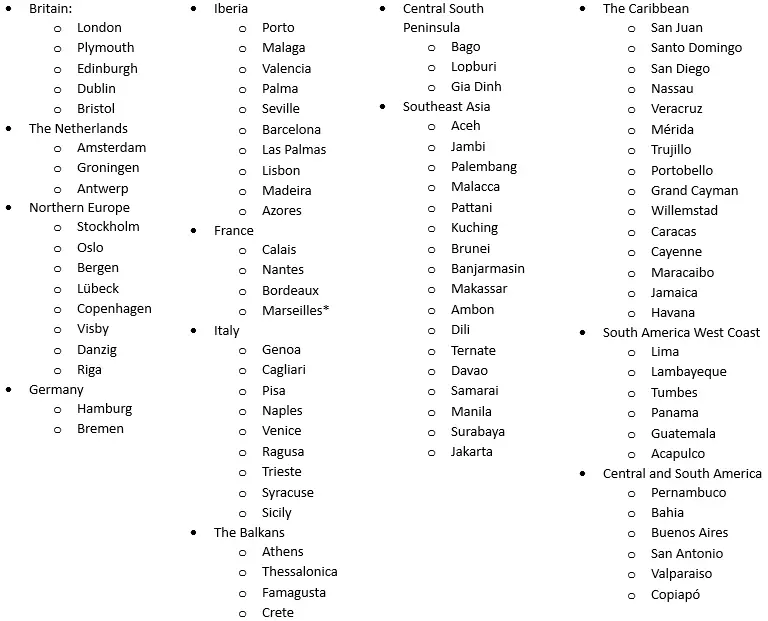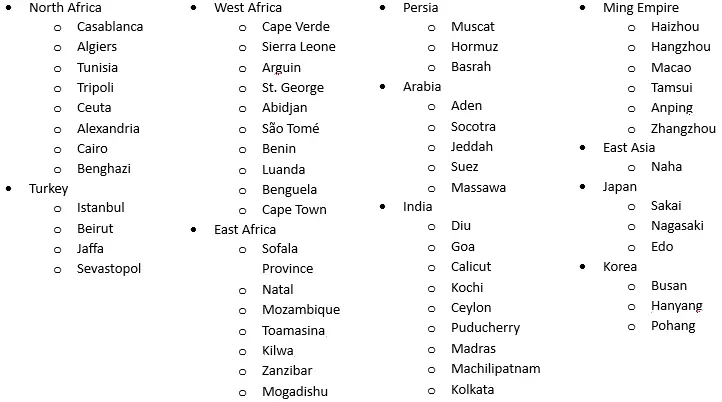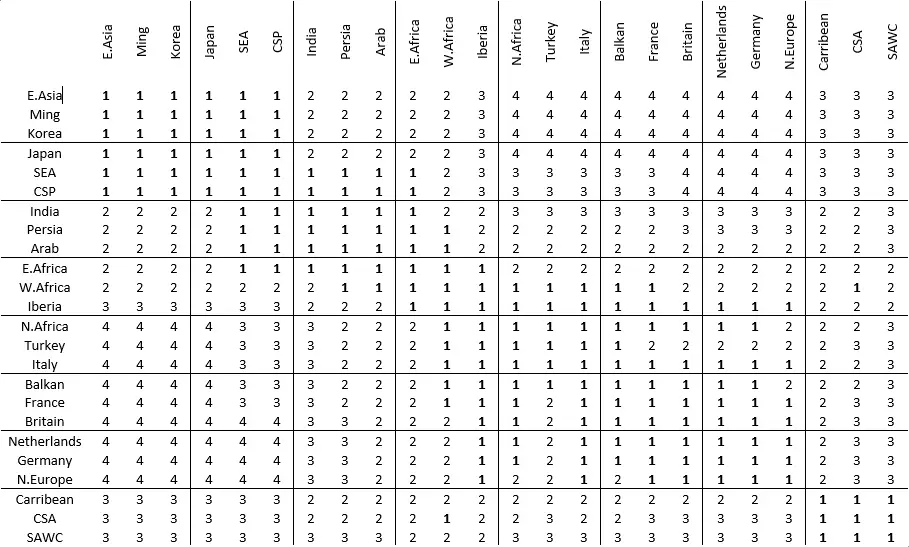Guild trading, cultural economic zones, and establishing a comprehensive baseline price list for all goods at each port are important aspects of the Sailing Era.
Resumo
The recent update, Era da Vela 1.2.4, has brought significant changes to the Trade Fleet function of Guilds. Agora, players have the ability to create regular trade routes starting from a city where a Guild has been established, connecting it to other cities through nautical routes, with certain limitations.
These trade routes can be run multiple times or continuously, and players have the option to sell the goods immediately or store them at the Dock for future handling.
No entanto, the question arises: How can players set up profitable routes? To answer this, we need to understand the dynamics of the markets in Sailing Era.
Pricing of Goods
The selling price of a specific Good at a particular port is influenced by three factors:
- The Baseline Price: Each Good has a Baseline Price specific to its culture. Non-specialty goods have the same Baseline Price at every port, indicated by their perfectly square borders. Por exemplo, Silver has a Baseline Price of 2000 globally.
- The Price Index: The Price Index for a Good at a specific port in a given month affects its selling price. The Price Index can be accessed through the Market Survey at the port’s store or by viewing the Market Survey on the map if the player has a Guild established there.
- Availability of Goods: If a Good is available for sale at a port, its price will be 10% lower than usual for that particular cultural zone. Por exemplo, Silver will be sold for 1800 in any location where it is available, with a Price Index of 100%.
It’s important to note that attempting to sell a Good to a port where it can normally be bought results in an additional penalty of 80% on the sale price. There is generally no good reason to engage in such transactions.
For a detailed spreadsheet displaying the baseline prices according to Cultural Economic Zones, you can refer to the Sailing Era Baseline Price document.
Cultural Economic Zones
As of Sailing Era 1.2.4.6 há 24 Cultural Economic Zones:


Marseilles presents a unique scenario in Sailing Era. Although it falls under the French Cultural zone, it prices certain goods such as Soap, Camomila, conhaque, and Velvet as if it were located in Italy. No entanto, it treats Linen as a non-specialty item.
The duration of a Trade Fleet’s journey is determined by the origin and destination zones it is traveling between.

In Sailing Era, before you can establish a Trade Route using the Charting Office, you are limited to opening a route to a port that is only one month away in terms of travel time.
Estratégia
The key strategy in Sailing Era is to buy goods at a low price and sell them at a higher price. Idealmente, you should look for a port in a nearby Cultural zone that offers significantly higher Baseline prices for items compared to the port where your Trade Route begins.
The ideal scenario is when the destination port also sells a Good at a much lower Baseline price compared to your Guild’s port. No entanto, this may not always be possible to find.
Let’s consider the example of Naha, a port that doesn’t produce any Specialty Goods. All the goods sold in Naha have the same Baseline Price as other ports, so you will rely solely on the 10% discount from Naha and the fluctuating Price Index.
No entanto, you can still make a profit on the return trip in this case. Trading with Bago for Jadeite, which has a value of 300%, almost guarantees a profit. By minimizing the risk of loss from Naha through trading the cheapest item (Fish Meat), you can maximize your overall profitability over time.
By carefully studying the chart and market conditions, you can establish a reliable passive income from just a few select cities around the world.
Isso é tudo o que estamos compartilhando hoje para isso Era da Vela guia. Este guia foi originalmente criado e escrito por Jathby Dredas. Caso não atualizemos este guia, você pode encontrar a atualização mais recente seguindo este link.